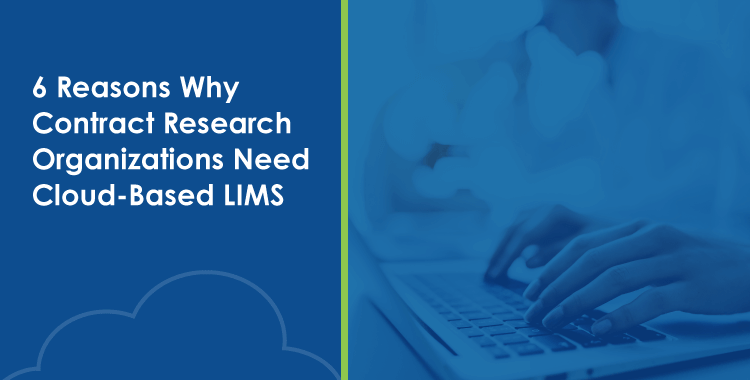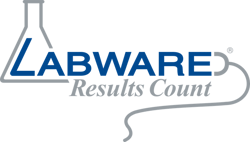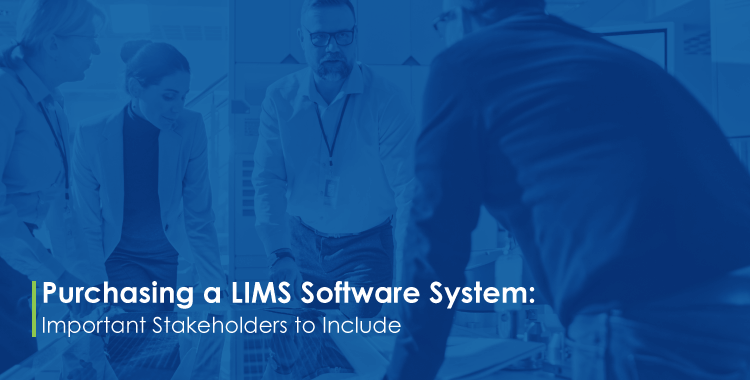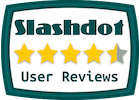
As the life sciences industry continues to evolve, cloud-based LIMS (Laboratory Information Management Systems) have emerged as a powerful solution for managing complex laboratory data and processes. Cloud-based LIMS solutions provide a range of advantages over traditional on-premises systems, enabling organizations to optimize operations while meeting regulatory requirements.
We will delve into the customization capabilities of these systems that cater to diverse clientele and their specific requirements. Furthermore, we'll discuss how smaller CROs can benefit from cost-effective yet high-quality cloud-based LIMS implementations. Additionally, we'll examine enhanced data security measures provided by these platforms in order to protect sensitive information against cyber threats.
We'll delve into how a SaaS-based LIMS can help your organization streamline operations and reduce IT maintenance time. Stay tuned for an insightful journey into the world of cloud-based LIMS and its numerous benefits.
Cloud-Based LIMS for Diverse Clientele
CROs serve a variety of customers, from large pharmaceutical companies to research institutions, and can leverage the power of cloud-based LIMS solutions to manage their diverse client requirements while maintaining high standards. A cloud-based laboratory information management system (LIMS) enables CROs to efficiently manage diverse client requirements while maintaining high-quality standards in their operations. By leveraging the power of cloud-based LIMS solutions, these organizations can streamline data management processes, customize workflows, and generate tailored reports for multiple customers.
Streamlined Data Management for Multiple Customers
A key advantage of using a cloud-based LIMS is its ability to centralize and organize vast amounts of data generated by various projects across different clients. This not only simplifies the process but also enhances overall efficiency as researchers can access all relevant information from one platform without any hassle. Furthermore, advanced search capabilities allow users to quickly retrieve specific datasets or project details on demand.
- Data centralization: Store all project related information in one place for easy access.
- User-friendly interface: Navigate through complex datasets with ease using intuitive features designed specifically for lab professionals.
- Faster retrieval: Locate crucial data points within seconds using powerful search functions built into the system.
Customizable Workflows and Reporting Features
No two projects are alike when it comes to contract research work; hence having a flexible solution that adapts itself according to individual customer needs is essential. Cloud-based LIMS offer customizable workflows that enable users to design unique processes based on specific project requirements or industry best practices. Additionally, these systems come equipped with robust reporting tools capable of generating comprehensive insights into various aspects of laboratory operations, such as sample tracking, instrument usage, and quality control metrics.
- Adaptable workflows: Tailor the system to meet specific project needs by creating custom workflows aligned with client expectations or industry standards.
- Dynamic reporting: Generate detailed reports on various aspects of lab operations using built in templates or create your own for a more personalized touch.
- Actionable insights: Leverage data driven analytics to make informed decisions that drive continuous improvement within the organization.
Incorporating a cloud-based LIMS into daily operations allows CROs to effectively manage multiple projects across diverse clientele while maintaining high quality standards. By streamlining data management processes and offering customizable features tailored to individual customer needs, these solutions empower organizations to deliver exceptional results in an increasingly competitive market. To learn more about how cloud-based LIMS can transform your contract research business, explore our comprehensive guide on LIMS implementation best practices.
Cloud-Based LIMS for diverse clientele provide organizations with a comprehensive, streamlined data management system that is customizable to meet the needs of multiple customers. By leveraging these features, companies can ensure regulatory compliance and simplify audit preparation processes.
Key Takeaway: Cloud-based LIMS solutions can help contract research organizations (CROs) manage diverse client requirements while maintaining high quality standards. By centralizing and organizing vast amounts of data, offering customizable workflows, and generating comprehensive insights into various aspects of laboratory operations, these systems empower CROs to effectively manage multiple projects across diverse clientele.
Meeting Regulatory Standards with Ease
External audits from clients can put contract research organizations (CROs) under intense scrutiny. A cloud-based laboratory information management system (LIMS) allows them to meet different industry regulatory standards seamlessly by providing efficient reporting capabilities tailored to each specific standard. This not only ensures compliance but also simplifies the audit preparation process, saving time and resources for CROs.
Efficient Compliance with FDA, EMA, and Other Regulations
The Food and Drug Administration (FDA), European Medicines Agency (EMA), and other regulatory bodies have stringent requirements that CROs must adhere to in order to maintain their credibility in the market. Cloud-based LIMS solutions are designed with these regulations in mind, offering features such as electronic signatures, audit trails, data integrity checks, and automated report generation that enable effortless compliance.
- Electronic Signatures: Securely sign off on documents within the LIMS platform using unique user credentials.
- Audit Trails: Track all changes made within the system along with timestamps and user details for complete traceability.
- Data Integrity Checks: Ensure data accuracy through built in validation rules that flag discrepancies or errors before they become critical issues.
- Automated Report Generation: Create customized reports according to specific regulatory guidelines without manual intervention or additional software tools.
Simplified Audit Preparation Process
A well organized audit trail is crucial when preparing for an external inspection by a client or regulator. With a cloud-based LIMS, CROs can easily generate comprehensive audit reports that include all relevant data and documentation in a format compliant with regulatory requirements. This eliminates the need for time consuming manual collation of information and reduces the risk of errors or omissions during the audit process.
Additionally, cloud-based LIMS solutions offer advanced search capabilities that enable users to quickly locate specific records or documents within the system when responding to audit queries. This greatly streamlines communication between auditors and CRO staff, ensuring a smoother overall experience.
Seamless Integration with Quality Management Systems
To further enhance compliance efforts, many cloud-based LIMS platforms can be seamlessly integrated with existing Quality Management Systems (QMS). Integrating the LIMS platform with an existing QMS facilitates the real-time tracking of KPIs associated with quality control operations, thereby allowing for early detection and rectification of any potential compliance issues before they become unmanageable.
In summary, adopting a cloud-based LIMS solution empowers CROs to meet diverse regulatory standards effortlessly while simplifying their audit preparation process. Organizations can now concentrate on providing optimal services to customers, without the burden of regulatory apprehensions.
By leveraging cloud-based LIMS, organizations can meet regulatory standards with ease while saving time and money. Aside from quality compliance there are advantages of a SaaS LIMS that will greatly enhance workflow efficiency and reduce the management of overhead.
Key Takeaway: A cloud-based LIMS system helps CROs meet regulatory standards with ease by providing efficient reporting capabilities tailored to each specific standard. It enables effortless compliance with FDA, EMA, and other regulations through features such as electronic signatures, audit trails, data integrity checks, and automated report generation. Additionally, it simplifies the audit preparation process by generating comprehensive reports that include all relevant data in a format compliant with regulatory requirements.
Software-as-a-Service (SaaS) LIMS Benefits
Utilizing a software-as-a-service (SaaS) model for laboratory information management systems (LIMS) offers maximum compatibility and flexibility for high functioning contract research organizations (CROs) managing multiple customer projects simultaneously. This approach reduces the need for extensive customization or additional IT resources, providing several key benefits that can help CROs stay competitive in today's fast paced market.
Lower Total Cost of Ownership Compared to Traditional Systems
The SaaS model allows CROs to access powerful LIMS capabilities without having to invest heavily in hardware, software licenses, or maintenance costs. Instead, they pay a subscription fee based on their usage needs. This not only lowers the initial investment but also ensures predictable ongoing expenses. According to a study by Computer Economics, companies using cloud-based solutions can save up to 15% in IT spending over five years when compared with traditional on-premise deployments.
Scalability as per Business Needs
SaaS LIMS solutions are designed with scalability in mind, allowing CROs to easily adjust their system capacity as their client base grows or project requirements change. With the ability to quickly scale up resources, CROs don't have to worry about investing in new hardware or updating their existing setup. For example, LabWare Cloud Services offers flexible deployment options and rapid scaling capabilities tailored specifically for growing businesses.
Ease of Integration and Collaboration
- No-hassle integrations: SaaS LIMS solutions are designed to easily integrate with other cloud-based applications, such as electronic laboratory notebooks (ELNs) and customer relationship management (CRM) systems. This seamless connectivity helps CROs streamline their workflows and improve overall efficiency.
- Enhanced collaboration: Cloud-based LIMS enable real-time data sharing between team members, regardless of their location. This facilitates better communication and faster decision making processes across the organization.
Automatic Updates and Maintenance
With a SaaS LIMS solution, software updates and maintenance tasks are handled by the service provider, ensuring that CROs always have access to the latest features without any downtime or disruption to their operations. In addition, providers typically offer 24/7 support services for troubleshooting issues or answering questions about system functionality.
Data Security Assurance
SaaS providers invest heavily in state of the art security measures to protect sensitive client information from potential threats. By choosing a reputable vendor like LabWare Cloud Services, CROs can rest assured that their data is safeguarded through advanced encryption methods, secure access controls, regular backups, and compliance with stringent privacy regulations such as GDPR or HIPAA.
In summary, cloud-based LIMS solutions offer several advantages over traditional onsite systems, including lower total cost of ownership, scalability, ease of integration and collaboration, automatic updates and maintenance, and data security assurance. By partnering with a trusted provider like LabWare Cloud Services, CROs can leverage these benefits to optimize their laboratory operations and stay ahead of the competition.
Software-as-a-service (SaaS) LIMS Benefits offer an efficient and cost effective way to manage laboratory information, allowing businesses of all sizes to save time and money. Moving on, Advantages for Smaller CROs provide a great opportunity for smaller organizations to leverage the power of cloud computing with rapid deployment times.
Key Takeaway: Utilizing a cloud-based LIMS offers several benefits for CROs, including lower total cost of ownership, scalability, ease of integration and collaboration, automatic updates and maintenance, and data security assurance. By partnering with trusted providers like LabWare Cloud Services, CROs can optimize their laboratory operations to stay competitive in the fast-paced market.
Advantages for Smaller CROs
Smaller contract research organizations (CROs) can greatly benefit from adopting a cloud-based laboratory information management system (LIMS). Factors such as initial pricing, speed of implementation, decreased IT resource requirements, and less need for customization make cloud-based LIMS an attractive option for these organizations. In this section, we will discuss the various advantages that smaller CROs can enjoy when implementing a cloud-based LIMS solution.
Cost-effective Solutions without Compromising on Quality
The initial cost of setting up a traditional LIMS infrastructure can be prohibitive for many small scale CROs. Cloud-based solutions offer more affordable pricing models based on usage or subscription fees. This enables smaller organizations to benefit from sophisticated functionalities that would usually be out of reach for them, at a much more affordable rate. Furthermore, leading service providers ensure high quality standards in their offerings by continuously updating their systems with new features and improvements.
Rapid Deployment Enabling Faster Project Initiation
In contrast to traditional on-premise systems that may require lengthy installation processes and hardware setup, cloud-based LIMS solutions are designed to be quickly deployed with minimal downtime. As most components are hosted remotely by the service provider, it is possible to get started within days rather than weeks or months required by conventional methods. This rapid deployment enables smaller CROs to initiate projects faster and respond more effectively to client demands.
Decreased IT Resource Requirements
- Maintenance: With cloud-based solutions taking care of software updates and server maintenance tasks automatically behind the scenes, there is no need for dedicated IT staff members focused solely on managing your organization's LIMS infrastructure.
- Data Storage: Cloud-based LIMS providers offer secure and scalable data storage options, eliminating the need for costly in-house servers or other hardware investments.
- Technical Support: Leading cloud service providers typically includecomprehensive technical support as part of their subscription packages, reducing the burden on your organization's IT resources to troubleshoot issues that may arise during daily operations.
Less Need for Customization
A major advantage of using a cloud-based LIMS is its inherent flexibility. Many solutions come with pre-built modules and features designed to cater to a wide range of industry requirements. This means smaller CROs can often find an out-of-the-box solution that meets most, if not all, of their needs without requiring extensive customization efforts. Moreover, many cloud-based systems allow users to easily configure settings and workflows according to specific project requirements through user friendly interfaces or APIs.
In conclusion, cloud-based LIMS solutions offer smaller CROs a cost-effective, flexible, and efficient alternative to traditional on-premises systems. By reducing IT resource requirements, enabling rapid deployment, and providing pre-built modules, cloud-based LIMS solutions can help smaller CROs compete with larger enterprises while maintaining high quality standards.
The advantages for smaller CROs offered by cloud-based LIMS solutions make it an affordable and reliable option that allows them to benefit from its rapid deployment capabilities. Moving on, enhanced data security measures are essential when using cloud technology to ensure the safety of sensitive information.
Key Takeaway: Smaller CROs can benefit from adopting a cloud-based LIMS due to cost-effective pricing models, rapid deployment, decreased IT resource requirements and less need for customization. Cloud-based solutions offer flexibility and efficiency while maintaining high-quality standards, enabling smaller organizations to compete with larger enterprises.
Enhanced Data Security Measures
In an era where data security is paramount across industries, implementing a cloud-based LIMS ensures that sensitive client information remains protected through advanced encryption methods and secure access controls provided by leading service providers. This section will discuss the importance of robust protection against cyber threats and compliance with stringent data privacy regulations in the context of cloud-based LIMS for contract research organizations (CROs).
Robust Protection Against Cyber Threats
Cybersecurity risks are constantly evolving, making it essential for CROs to adopt cutting edge measures to safeguard their clients' valuable data. Cloud-based LIMS solutions offer several advantages over traditional on-premises systems when it comes to cybersecurity:
- Data Encryption: Leading cloud service providers employ state-of-the-art encryption techniques both at rest and during transmission, ensuring that your clients' sensitive information remains secure.
- Dedicated Security Teams: Top-tier cloud vendors have dedicated teams working round the clock to monitor potential threats and implement necessary countermeasures. This level of expertise is often difficult for individual CROs to match in-house.
- Patch Management: Regular software updates are crucial for maintaining a strong defense against emerging vulnerabilities. With a SaaS model, these updates are managed by the provider automatically, reducing the risk of human error or oversight.
Compliance with Stringent Data Privacy Regulations
CROs must guarantee they meet different regional and sectorspecific data security regulations, such as GDPR in Europe or HIPAA in the US. A reputable cloud-based LIMS can help streamline this process by offering:
- Compliance Certifications: Many cloud service providers undergo rigorous third-party audits to demonstrate their adherence to specific regulatory standards. By choosing a provider with relevant certifications, CROs can have greater confidence in their compliance efforts.
- Data Localization Options: Some regulations require that data be stored within certain geographic boundaries. Top cloud vendors offer multiple data center locations, allowing CROs to select the most appropriate region for storing client information.
- Built-in Privacy Controls: Cloud-based LIMS solutions often include features designed specifically to support privacy compliance, such as user access controls and audit trails. These tools make it easier for CROs to manage and monitor their adherence to various regulations.
CROs of all sizes are confronted with the necessity to guarantee strong data security in today's highly interconnected world. By adopting a cloud-based LIMS solution backed by leading service providers' expertise and resources, CROs can confidently protect sensitive client information while maintaining full compliance with stringent privacy regulations. Learn more about how LabWare's Cloud-Based LIMS offers enhanced security measures tailored specifically for the needs of modern contract research organizations.
Strengthened data safety protocols ensure confidential info is safeguarded and secure. By shifting IT responsibilities to cloud-based LIMS, organizations can redirect their focus on core business operations for improved customer satisfaction.
Key Takeaway: Cloud-based LIMS offers enhanced data security measures and robust protection against cyber threats, including state-of-the-art encryption techniques, dedicated security teams, and regular software updates. Additionally, cloud-based LIMS helps CROs comply with stringent data privacy regulations through compliance certifications, data localization options, and built-in privacy controls. By adopting a cloud-based LIMS solution backed by leading service providers' expertise and resources, CROs can confidently protect sensitive client information while maintaining full compliance with various regulatory standards.
Focusing on Core Business Operations
Adopting a cloud-based LIMS allows contract research organizations (CROs) to concentrate their efforts on improving the efficiency of their core business operations, rather than being bogged down by IT infrastructure management. This approach facilitates the delivery of improved outcomes for customers and helps to sustain a competitive advantage in the market.
Reduced Time Spent Managing IT Resources
One of the key benefits of implementing a cloud-based LIMS solution is that it significantly reduces the time and effort required to manage IT resources. Traditional, on-premise systems often require dedicated personnel for maintenance, updates, and troubleshooting. With a cloud-based system, these tasks are handled by the service provider, freeing up valuable time for CRO staff to focus on research projects and client satisfaction.
- No Need for In-House Server Maintenance: Cloud providers take care of server upkeep so that CROs can focus on their core competencies without worrying about hardware issues or downtime.
- Automatic Software Updates: The latest features and security patches are automatically deployed by software as a service (SaaS) providers, ensuring that users always have access to cutting-edge technology without any manual intervention.
- Easier Collaboration Across Teams: A cloud-based LIMS facilitates seamless communication between team members working from different locations or even different organizations. This enhances project coordination while reducing delays caused due to miscommunication or lack of information sharing.
Enhanced Focus on Research Projects and Customer Satisfaction
Apart from saving time spent managing IT resources, adopting a cloud-based LIMS also helps CROs enhance their overall operational efficiency. By automating routine processes such as data entry, sample tracking, and report generation, a cloud-based LIMS allows researchers to focus on their core tasks: conducting experiments and analyzing results. This not only leads to higher productivity but also ensures that clients receive the best possible service.
- Streamlined Workflows: Cloud-based LIMS solutions offer customizable workflows tailored to meet specific client requirements. This enables CROs to optimize their processes for maximum efficiency while ensuring compliance with industry standards.
- Better Decision-Making: Real-time access to accurate and up to date information empowers CRO staff members to make informed decisions quickly, leading to faster project completion times and improved customer satisfaction rates.
- Innovative Research Capabilities: The flexibility offered by a cloud-based LIMS encourages innovation within the organization as it allows researchers more time for creative problem solving instead of getting bogged down in administrative tasks.
In today's competitive landscape, CROs must constantly strive for operational excellence in order to stay ahead of the curve. Implementing a cloud-based laboratory information management system is an effective way for CROs of all sizes, from small startups to large enterprises, to achieve this goal by focusing on what they do best: delivering high quality research services that exceed client expectations.
Key Takeaway: Adopting a cloud-based LIMS allows CROs to focus on core business operations, reduces time spent managing IT resources and enhances operational efficiency. It streamlines workflows, enables better decision-making and encourages innovation within the organization while ensuring compliance with industry standards.
FAQs in Relation to Cloud-Based Lims
What is Cloud-Based LIMS?
A cloud-based LIMS (Laboratory Information Management System) is a software solution hosted on remote servers, providing lab data management and automation services over the internet. It enables labs to access their data from anywhere, streamline workflows, reduce IT infrastructure costs, and improve collaboration among team members. Cloud LIMS are scalable and easily adaptable to changing business needs.
What are the Benefits of Cloud LIMS?
Benefits of cloud LIMS include lower total cost of ownership, scalability as per business needs, rapid deployment for faster project initiation, enhanced data security measures with compliance to stringent privacy regulations. Additionally, it reduces time spent managing IT resources while allowing organizations to focus on core research projects and customer satisfaction. Learn more about cloud-based LIMS benefits here.
What is LabWare Cloud?
LabWare Cloud is a Software-as-a-service (SaaS) based Laboratory Information Management System that provides robust features such as customizable workflows, efficient regulatory compliance management like FDA or EMA standards along with streamlined data management for multiple customers. It offers cost-effective solutions without compromising quality for smaller CROs too. For more information about LabWare's offerings visit their official website.
What are the Disadvantages of LIMS?
Disadvantages of traditional LIMS may include high upfront costs, limited scalability, complex implementation processes, and dependency on in-house IT infrastructure. However, cloud-based LIMS solutions like LabWare Cloud have addressed many of these drawbacks by offering lower total cost of ownership, rapid deployment options and enhanced data security measures. Explore the pros and cons of LIMS here.
Conclusion
In conclusion, cloud-based LIMS solutions offer a range of benefits for businesses of all sizes. From streamlined data management and regulatory compliance to enhanced security measures and reduced IT resource management, these systems provide an efficient and cost-effective solution for laboratories. SaaS provides a flexible solution for businesses of any size, making it an ideal choice for those looking to scale up.
If you're looking to implement a cloud-based LIMS system in your laboratory or research facility, LabWare's solutions can help you achieve your goals. With customizable workflows, robust data security measures, and simplified audit preparation processes, LabWare's cloud-based LIMS is the perfect tool to optimize your laboratory operations.
Visit LabWare today to learn more about our innovative LIMS solutions!
















